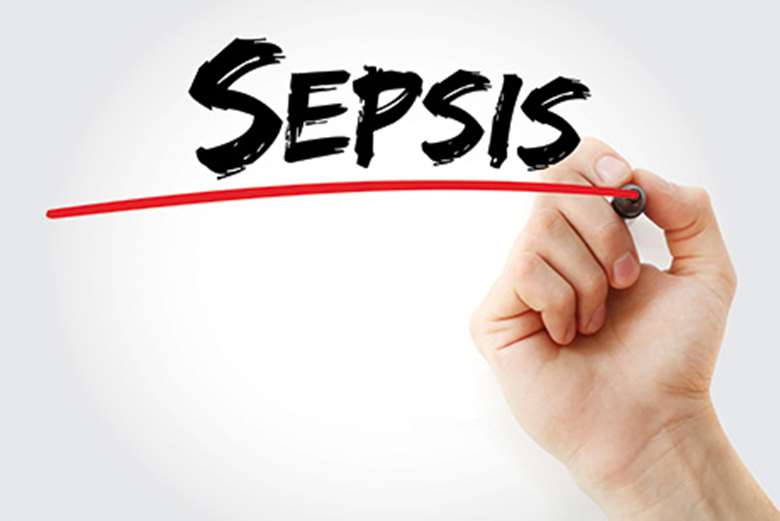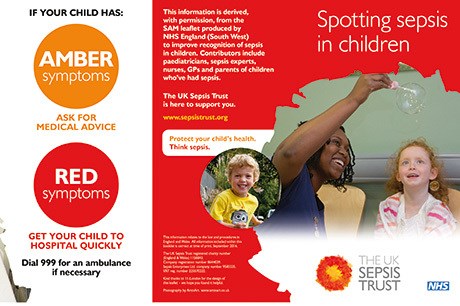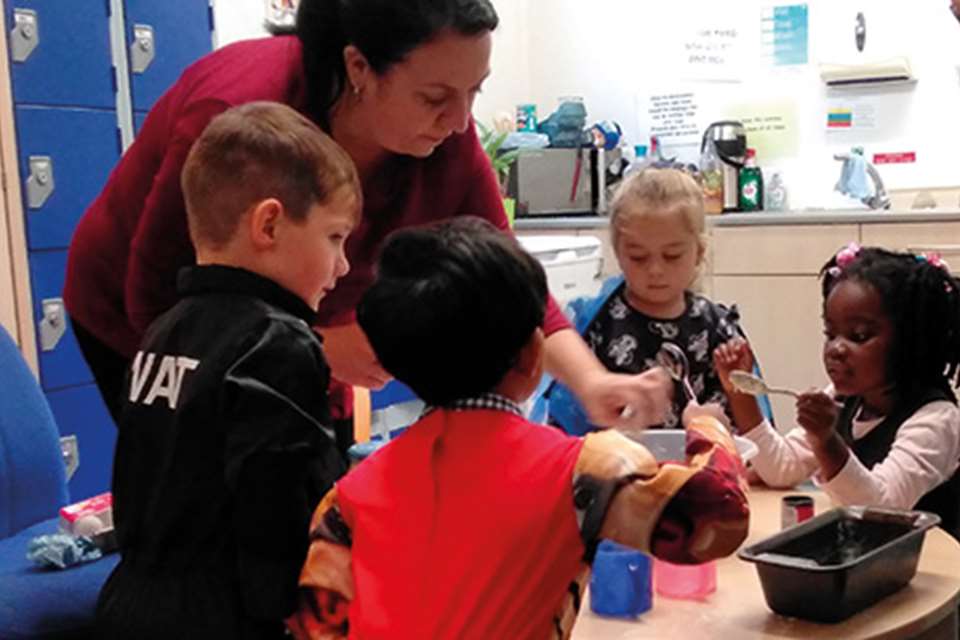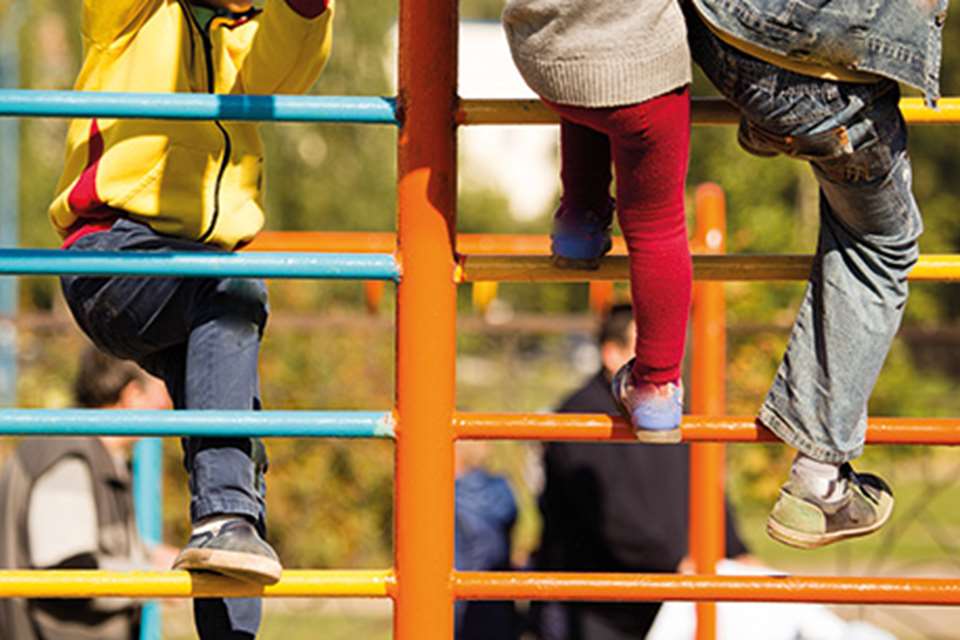Sepsis: In silence
Monday, June 24, 2019
What is sepsis and how can practitioners and parents spot the early warning signs? Meredith Jones Russell reports

Download the PDF of this article
Sepsis, the so-called ‘silent killer’, is one of the most common causes of death in the UK, thought to affect around 250,000 people a year and claim the lives of 46,000 – including children – in England alone. It can also result in the loss of limbs and organ failure. Sepsis deaths in England’s hospitals have risen by more than a third in two years, according to data from the Dr Foster research unit at Imperial College in London. However, definite statistics on the number of sepsis deaths vary as there is no official registry.
Colin Graham, chief executive of Sepsis Research, explains, ‘There are universal codes for problems like severe chest infections, but in many cases sepsis is really the main issue. We have heard the figure of up to 52,000 UK deaths a year, but we’ve also heard as low as 44,000, and fewer. We are calling for better sepsis coding so we can get the numbers right.’
MOVING FAST
Sepsis is caused by the body’s response to an infection. When the immune system goes into overdrive trying to fight the infection, it can release chemicals into the bloodstream rather than targeting the infection itself. Treatment is often possible, usually with antibiotics alongside fluids and oxygen, but the NHS says medication must be delivered within an hour of diagnosis to avoid serious complications or death.
National project co-ordinator for the UK Sepsis Trust Melissa Mead’s one-year-old son William died of blood poisoning following a chest infection in 2014. She says the early stages of sepsis are when awareness of the signs and symptoms is key.
‘With every hour that passes, the chance of death increases by 8 per cent. For my son, it was 36 hours from his first symptoms to his death,’ Ms Mead explains. ‘If a child has a high temperature at nursery, staff usually call a parent and ask them to come and pick their child up. However, working parents might not answer their phone, and many may not be able to collect their child immediately.
‘If parents cannot arrange instant pick-up, we want to make sure staff know what to look out for during that period. Sepsis doesn’t stop for anyone.’
In Scotland, Sepsis Research found the majority of people only knew one symptom of sepsis – a high temperature. As chief executive Colin Graham notes, ‘that could mean anything’. In response, Sepsis Research, backed by the Scottish Government, has run a campaign for the past two years raising awareness of the signs and symptoms of sepsis among families and professionals.
The UK Sepsis Trust has an amber and red checklist system for spotting signs of sepsis which is available for display in settings and to send home to parents. ‘You need to know the history,’ says Ms Mead. ‘When asked, you need to know what the child’s temperature has changed from, and when they last had a wee.’
PAEDIATRIC SEPSIS
Babies and younger children are more likely to develop sepsis because their immune systems are not yet fully developed. In the UK each year around 25,000 children are diagnosed with sepsis, while between 1,000 and 4,000 children under five are estimated to die.
Premature babies are particularly at risk of sepsis because they are likely to have low birth weights and high exposure to bacteria via invasive treatments and procedures. Occasionally, infections passed from mother to baby can also cause sepsis.
In Scotland, a Paediatric Early Warning Score (PEWS) system was introduced in 2017 to identify deterioration in child patients being treated in hospitals. PEWS is also used in Northern Ireland and the Republic of Ireland, but not yet in England or Wales, where individual hospitals use different systems for measuring signs of sepsis.
The Royal College of Nursing (RCN) hit the headlines last month after calling for a nationwide uniform PEWS system in England. Fiona Smith, professional lead for children and young people at the RCN, says, ‘Nurses have been calling for a national standardised PEWS system for children for over ten years now. Progress on delivering this has been too slow.’
However, elements of the scheme, which monitor children’s vital signs, including heart rate, respiratory rate, blood pressure, oxygen saturation and temperature, have already been tested at specialist institutions including Great Ormond Street. Marcia Philbin, staff lead on PEWS for the Royal College of Paediatrics and Child Health, says with the help of NHS England and NHS Improvement, the score system should be in place by the end of the year.
‘PEWS would provide a much-needed framework to help healthcare professionals spot clinical and non-clinical signs of deterioration in paediatric patients,’ says Dr Philbin. ‘I am surprised by the RCN’s stance, to be honest, as they’ve been fully involved in discussions about creating PEWS since the beginning.’
A new PEWS system would mirror the National Early Warning Score (NEWS) for adults which was introduced in England last year, but Dr Philbin says there will be important differences.
‘People assume children are just small adults and you can use the same system for both, but their biochemistry is completely different and you cannot simply map the adult system onto children. Children will deteriorate incredibly quickly as they do not have the same resilience as adults.’
EARLY OBSERVATIONS
Dr Philbin agrees with Ms Mead that early observation is vital to combating sepsis.
‘There are some data points which are very clear, like blood pressure or oxygen saturation, but there are also important qualitative areas which might be observed by a parent or carer. They know the child, so they can tell when something isn’t right, like when a child looks more like they are falling into unconsciousness than sleeping. That’s a valid data point too, and concerns must be followed up on.’
While PEWS will be put in place for use by health professionals, Ms Mead agrees these qualitative areas must be monitored by anyone who is caring for children, including early years practitioners.
‘Nursery workers, who might be with children for six to eight hours a day, five days a week, inevitably know those children inside out and upside down,’ she says. ‘They are well placed to notice the subtle signs of sepsis, from infection to serious threat. We want to empower them with the knowledge of when children have a standard infection and when things look worse.’
Most importantly, though, if staff notice any warning signs, the UK Sepsis Trust recommendation is, ‘don’t wait, don’t hesitate, ring 999’.
‘The most important thing is that staff follow their instinct,’ Ms Mead says. ‘If your gut feeling is that something is wrong, call for help. Do not see it as time-wasting. It is better to be wrong than sorry.’

How to spot sepsis
Go straight to A&E or call 999 if a child has any of these symptoms:
- looks mottled, bluish or pale
- is very lethargic or difficult to wake
- feels abnormally cold to touch
- is breathing very fast
- has a rash that doesn’t fade when pressed
- has a fit or convulsion
Call 111 for urgent medical advice if a child has any of the following symptoms, is getting worse or is sicker than expected:
Temperature
- over 38C in babies under three months
- over 39C in babies aged three to six months
- any high temperature in a child who cannot be encouraged to show interest in anything
- a low temperature (below 36C – check three times in a 10-minute period)
Breathing
- finding it much harder to breathe than normal
- making ‘grunting’ noises with every breath
- unable to say more than a few words at once
- breathing that ‘pauses’
Toilet/nappies
- no wee or wet nappy for 12 hours
Eating and drinking
- baby under one month old with no interest in feeding
- not drinking for more than eight hours when awake
- bile-stained (green), bloody or black vomit
Activity and body
- soft spot on head bulging
- ‘sunken’ looking eyes
- child cannot be encouraged to show interest in anything
- baby is floppy
- weak, ‘whining’ or continuous crying in a younger child
- older child who is confused
- unresponsive or very irritable
- stiff neck, especially when trying to look up and down
Source: the NHS
MORE INFORMATION
https://www.nhs.uk/conditions/sepsis
https://www.sepsisresearch.org.uk
Contact Melissa Mead at melissa@sepsistrust.org for talks, support or more information
The RCPCH hosts a podcast on sepsis at https://www.rcpch.ac.uk/resources/paediatric-sepsis-podcasts








